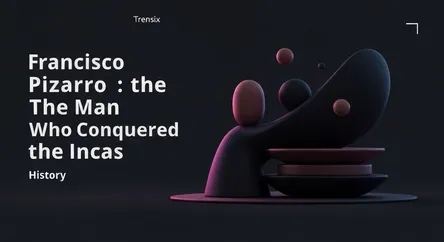History
Francisco Pizarro: The Man Who Conquered the Incas

An overview of Francisco Pizarro, the Spanish conquistador famous for leading the expedition that caused the fall of the mighty Inca Empire in Peru.
What is it?
Francisco Pizarro (c. 1478–1541) was a Spanish conquistador who led the conquest of the Inca Empire. Born in Trujillo, Spain, to a poor family, Pizarro was the illegitimate son of an infantry colonel and grew up illiterate. Seeking fortune in the New World, he participated in several expeditions, including one where he became one of the first Europeans to see the Pacific Ocean from the Americas. His ambition ultimately led him to organize three expeditions to the rumored wealthy lands of Peru.
Why is it trending?
Pizarro's story remains a compelling and controversial topic in world history. His third expedition in 1531, with fewer than 200 men, managed to topple the largest empire in the Americas. The dramatic capture of the Inca emperor, Atahualpa, at Cajamarca is a focal point of his legacy. Despite the Incas paying a massive ransom for Atahualpa's release, Pizarro executed him, a decision that sealed the empire's fate. This tale of audacity, betrayal, and military success against overwhelming odds continues to fascinate historians and the public.
How does it affect people?
Pizarro's conquest had a profound and lasting impact on the world. It led to the collapse of the Inca civilization and initiated centuries of Spanish colonization in South America, fundamentally reshaping the continent's cultural and political landscape. He founded the city of Lima, which remains the capital of Peru today. While his actions brought immense wealth to the Spanish crown, they came at the cost of a sophisticated civilization and countless indigenous lives, making his legacy a complex and debated subject of power, ambition, and cultural loss.